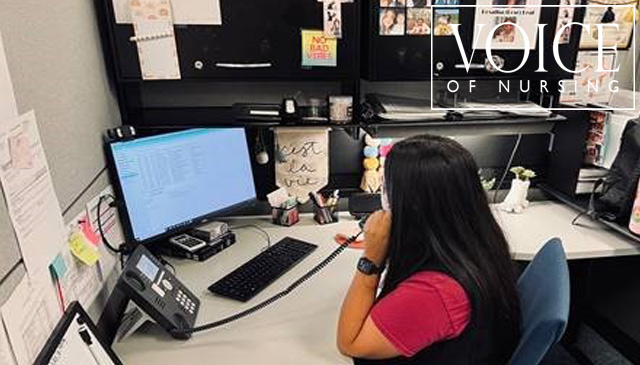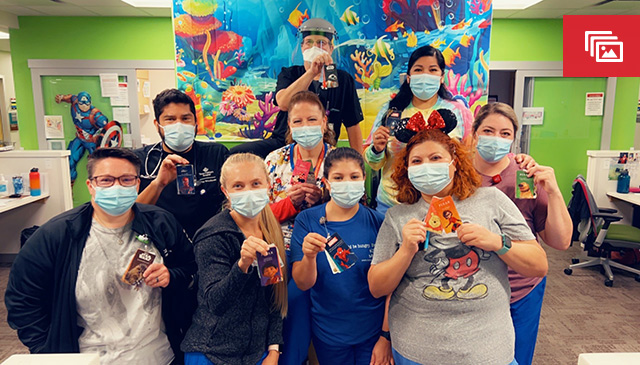
Having a good sleep routine is important for staying healthy and performing well in school and at work. A number of studies have shown a connection between sleep deprivation and experiencing health issues including a greater risk of obesity, diabetes, cardiovascular disease and depression; disorders or behaviors including hyperactivity, irritability and impulsivity; and a disruption in the skills needed for learning: attention, concentration, memory, problem-solving and decision-making. Let’s focus on our health by getting a healthy amount of sleep each night for ourselves and our families.
Determining the right amount of sleep
Part of ensuring exhaustion is not part of your day, is knowing the right amount of sleep you and your family may need. This can vary depending on age and individual needs. The American Academy of Sleep Medicine (AASM) recommends these ranges for how much sleep a person should get during a 24-hour period for ages:
- 4-12 months – 12 to 16 hours (including naps)
- 1-2 years – 11 to 14 hours (including naps)
- 3-5 years – 10 to 13 hours (including naps)
- 6-12 years – 9 to 12 hours
- 3-18 years – 8 to 10 hours
- 18-60 years – 7 or more hours
- 61-64 years – 7 to 9 hours
- 65+ years – 7 to 8 hours
The blog Children Need Sleep: The Effects of Too Few ZZZs also offers helpful information about the importance of making kids’ sleep a priority.
Getting back on track with healthy sleep schedules
For families with children, the days of staying up later and sleeping later are coming to a close as schools start back up in August. The best way to prepare your children for their back-to-school sleep schedule is by beginning the transition early – health professionals recommend ten days to two weeks out.
This goes for adults and anyone without children as well, as we can all get off track with our sleeping patterns in the summer and at other times in life. Everyone should revisit healthy sleep habits whenever needed throughout life.
Adopting healthy sleep habits
Recommendations to help with this transition begin with progressively waking up 15 minutes earlier each morning and preparing for bed 15 minutes earlier each evening until your children or you are back on track. Additional tips include:
Being consistent. Following a routine sleep schedule during the week and sticking to it through the weekend can help keep circadian rhythms (the body’s internal clock) regulated.
Maintaining a soothing bedtime routine. A bedtime routine will help signal to your body that it’s time to sleep. Establishing quiet time, reading a book, hearing a bedtime story, taking a warm bath or shower and other bedtime activities can help you wind down, relax and prepare for bed.
Limiting screen time before bed. Studies show that the light from cell phone, tablet and laptop screens can confuse our bodies into thinking it’s still light outside, making it harder to fall asleep. Turning off the TV and other electronics an hour before bed and keeping mobile devices outside the bedroom will help avoid this issue.
Creating a calm sleep environment. A dark and quiet room, comfortable bed and room temperature (68 to 72 degrees) are the basics of an environment that is conducive to sleep. A white noise machine, calming music or fan can also be effective in soothing you and/or your kids to sleep by creating a consistent and rhythmic sound. Click here to explore white noise machines on amazon.
Establishing a caffeine cut-off time. Six hours prior to bedtime is the recommended time to stop consuming caffeinated beverages that can interrupt natural sleep patterns.
Avoiding big meals before bedtime. Oversized portions or spicy foods can cause discomfort from indigestion and make it hard to fall asleep.
Exercising after school or work. Physical activity in the afternoon can help ensure a good night’s sleep by tiring you out, although some people find it harder to sleep if they exercise too close to bedtime. You know yourself and your kids best – make sure to encourage exercise at the ideal time.
In addition to the importance of a routine wake up time and exercise, in their video 3 tips for kids to get better sleep, the Mayo Clinic recommends avoiding naptime, which can cause difficulty staying asleep during the night. For adults, experts suggest keeping a firm bedtime each night in the video Mayo Clinic Minute: Tips for better sleep.
Fun apps for winding down before bed
Along with the tips mentioned above, you might want to try an app to help with getting to sleep and establishing a good sleep routine.
Suggested apps for adults to encourage healthy sleep:
- Headspace, Slumber, Calm, Ten Percent Happier.
- Spotify playlists: Deep Sleep Playlist or Ambient Relaxation
Apps for kids that others have found helpful include:
Bedtime stories and meditations: Sleep Meditation for Kids, Sleepiest or Moshi
Spotify playlists: Calm Kids, Stress Relief for Children or Sleepy Lullaby Songs
Remember, no matter what nighttime routine you plan, it is important that you are consistent so that everyone’s bodies and minds know that it is time for bed and they naturally start winding down.







